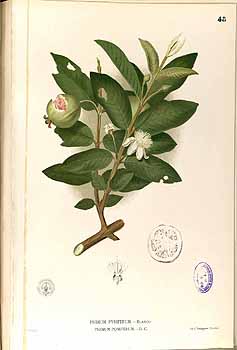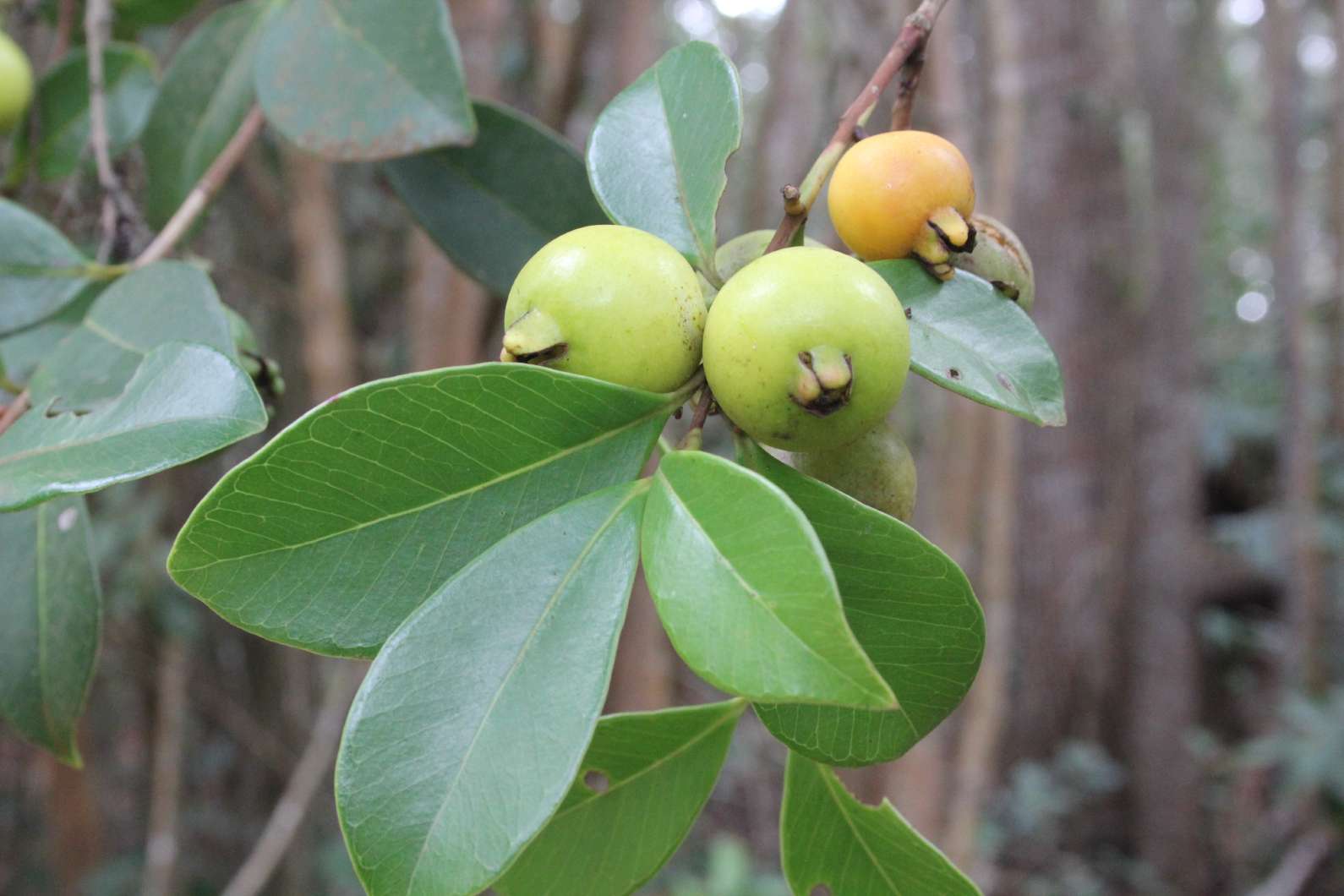! Nouveau site ici !
Vita > Plantae > Magnoliophyta > Magnoliopsida > Myrtales >
Myrtaceae > Psidium
Psidium guajava
(Goyavier)

 | *****
| *****
Vita > Plantae > Magnoliophyta > Magnoliopsida > Myrtales >
Myrtaceae > Psidium
Psidium guajava
(Goyavier)

-1/-3/-3,5 (0?)
Un petit arbre ou arbuste de 8 à 10 m de haut. C'est toujours vert. Il a une écorce lisse marbrée. L'écorce se détache en flocons lisses. La plante se ramifie près du sol. Les branches sont à quatre angl... (traduction automatique)
→suite
⬀
Le  donne accès au menu
donne accès au menu (c'est votre point de repère) 😊 ;
En dessous vous avez la classification, à partir de la vie (Vita, premier rang) jusqu'à la classe au dessus de la plante, dont vous trouvez ensuite le nom scientifique/botanique (latin) puis le nom commun (français), le cas échéant ;
C'est aussi un lien vers la fiche complète (tout comme la ✖, en bas à droite, et le +, en dessous de la description) ;
Vient alors l'illustration (ou ce qui la remplace, en attendant), la comestibilité :
Et en bas
⬂

![Illustration Psidium guajava, Par Britton, N.L., Horne, F.W., Popular flora of Puerto Rico, Flora Borinqueña [unpublished watercolors] Popular Fl. Puerto Rico t. 472] , via plantillustrations Illustration Psidium guajava, Par Britton, N.L., Horne, F.W., Popular flora of Puerto Rico, Flora Borinqueña [unpublished watercolors] Popular Fl. Puerto Rico t. 472] , via plantillustrations](../inc/images/illustrations/psidium_guajava.jpg )

![Illustration Psidium guajava, Par Descourtilz, M.E., Flore [pittoresque et] médicale des Antilles (1821-1829) Fl. Méd. Antilles vol. 2 (1822) [tt. 69-152] t. 72, via plantillustrations Illustration Psidium guajava, Par Descourtilz, M.E., Flore [pittoresque et] médicale des Antilles (1821-1829) Fl. Méd. Antilles vol. 2 (1822) [tt. 69-152] t. 72, via plantillustrations](../inc/images/illustrations/psidium_guajava3.jpg )
![Illustration Psidium guajava, Par Descourtilz, M.E., Flore [pittoresque et] médicale des Antilles (1821-1829) Fl. Méd. Antilles vol. 2 (1822) [tt. 69-152] t. 72, via plantillustrations - Fermer Illustration Psidium guajava, Par Descourtilz, M.E., Flore [pittoresque et] médicale des Antilles (1821-1829) Fl. Méd. Antilles vol. 2 (1822) [tt. 69-152] t. 72, via plantillustrations - Fermer](../../inc/images/illustrations/psidium_guajava3.jpg )




